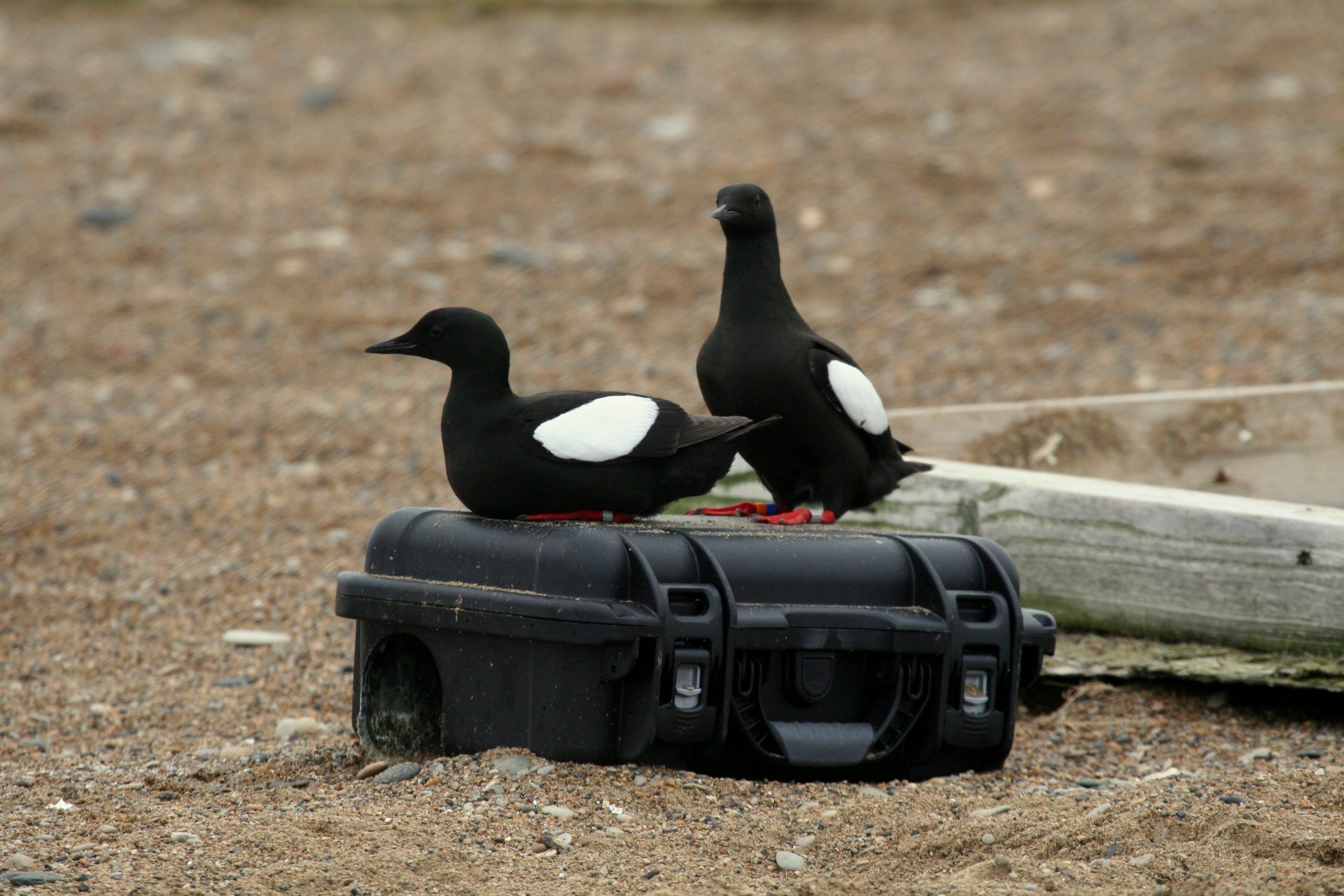This past summer the Cooper Island field camp was thankful to have a return visit from photographer Joe McNally. Joe has been taking photos longer than I have been studying Cooper Island Black Guillemots and his website shows both the quality and scope of his work. His visit in 2001 took place before we had...
Author: George Divoky (George Divoky)
World Wildlife Fund features Cooper Island research in Arctic Magazine
The 2019 winter edition of the World Wildlife Fund’s Arctic magazine, The Circle, features findings from the Cooper Island Black Guillemot study. The entire issue is well worth reading with articles on how the warming Arctic is affecting indigenous people, birds and mammals, and tundra vegetation. The WWF website has additional text and links not...
A Visit From a French Demographer
Thanks to our participation in the international Sentinels of Sea Ice (SENSEI) project, this summer the Cooper Island field camp was visited by Pierre-Loup Jan, the post-doc analyzing the Cooper Island demographic data set. After 44 years of sharing the island with a seabird with a French name (“guillemot” is the diminutive of Guillaume –...
The Darkness of August
by George Divoky While much has changed over the course of the 45 summers I have spent on Cooper Island, as warming from anthropogenic carbon emissions has modified the Arctic’s snow and ice habitats, one thing has remained constant. The sun is always above the horizon for 24 hours when I arrive in early June and it...
Loss of Sea Ice Takes Its Toll on Seabirds
By George Divoky The positive signs of colony size and breeding effort of the Black Guillemots on Cooper Island in June were too good to last. After very high hatching success, the decreased ice and increased water temperatures took their toll as parents were unable to find prey in the warm, ice-free waters. Rapidly shifting...
Birds on Nests During Incubation
By George Divoky The Black Guillemots on Cooper Island continued to show signs of a turnaround from the poor breeding season of 2018 as egg laying and incubations has occurred in over 75 nests this year, compared to only 25 last year. The breeding population saw the recruitment of 20 birds that had fledged from the island...
A visit from a long-term friend of Cooper Island
By George Divoky Cooper Island has provided me with a place to conduct a long-term study of an Arctic seabird and also a place where I have been fortunate to establish some long-term friendships. In June 2001, photographer Joe McNally visited the island to obtain images to accompany the New York Times story Darcy Frey was writing...
Field Season Update: 75 active nest sites
Polar bears caused me to get a cabin on Cooper Island in 2003. After a rapid retreat of sea ice in August 2002, bears trashed our tents, which required making a hasty departure from the island with the help of a North Slope Borough Search and Rescue helicopter. The first week of the 2019 field season found...
Start of the 45th field season
Even after 44 years, preparing for the field season to study Black Guillemots on Cooper Island is a time of excitement and anticipation as I gather the gear and supplies needed to survive and conduct research for three months on a remote Arctic island. This year the excitement was tempered with a high level of...
2019 Seattle Update – March 26
Tuesday March 26 at Seattle’s Swedish Club Reception at 6 pm with presentation at 7 pm Reception at 6 pm with talk at 7 pm The Cooper Island Black Guillemot colony was first recognized as a monitor of a warming climate in 2002, the 23rd year of the study. Decreasing sea ice in a rapidly melting Arctic...








